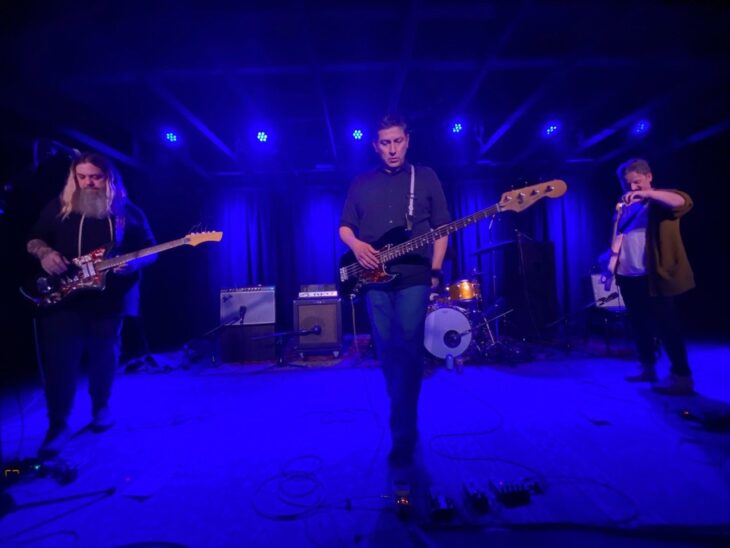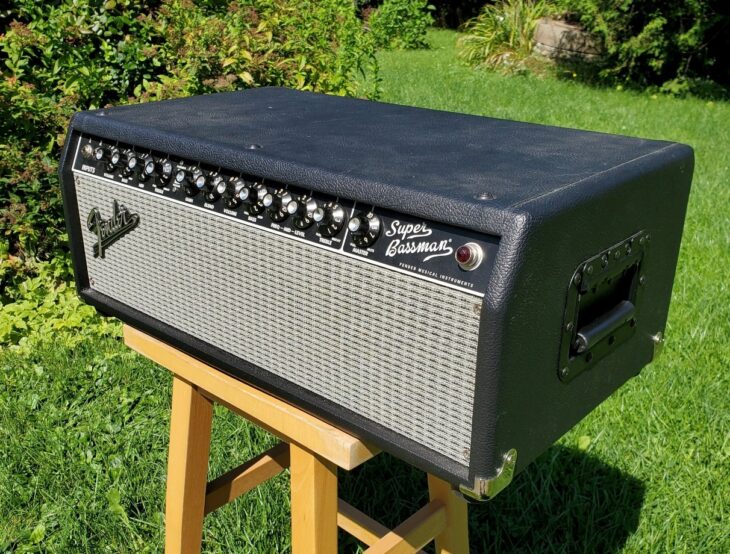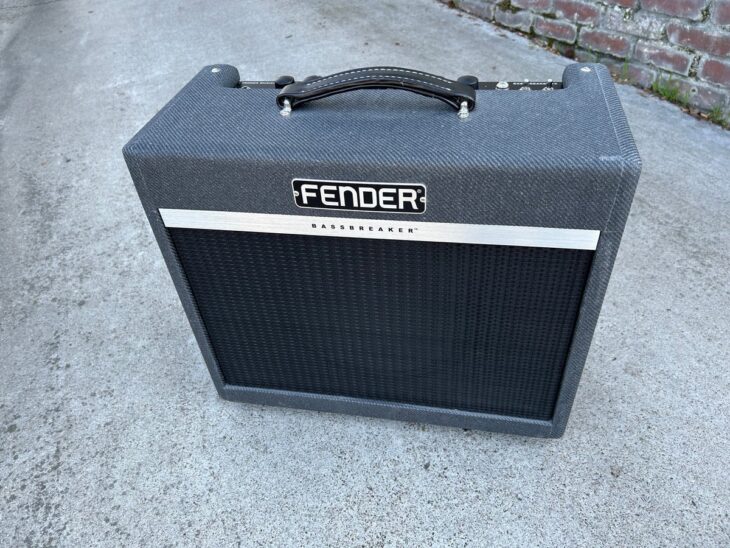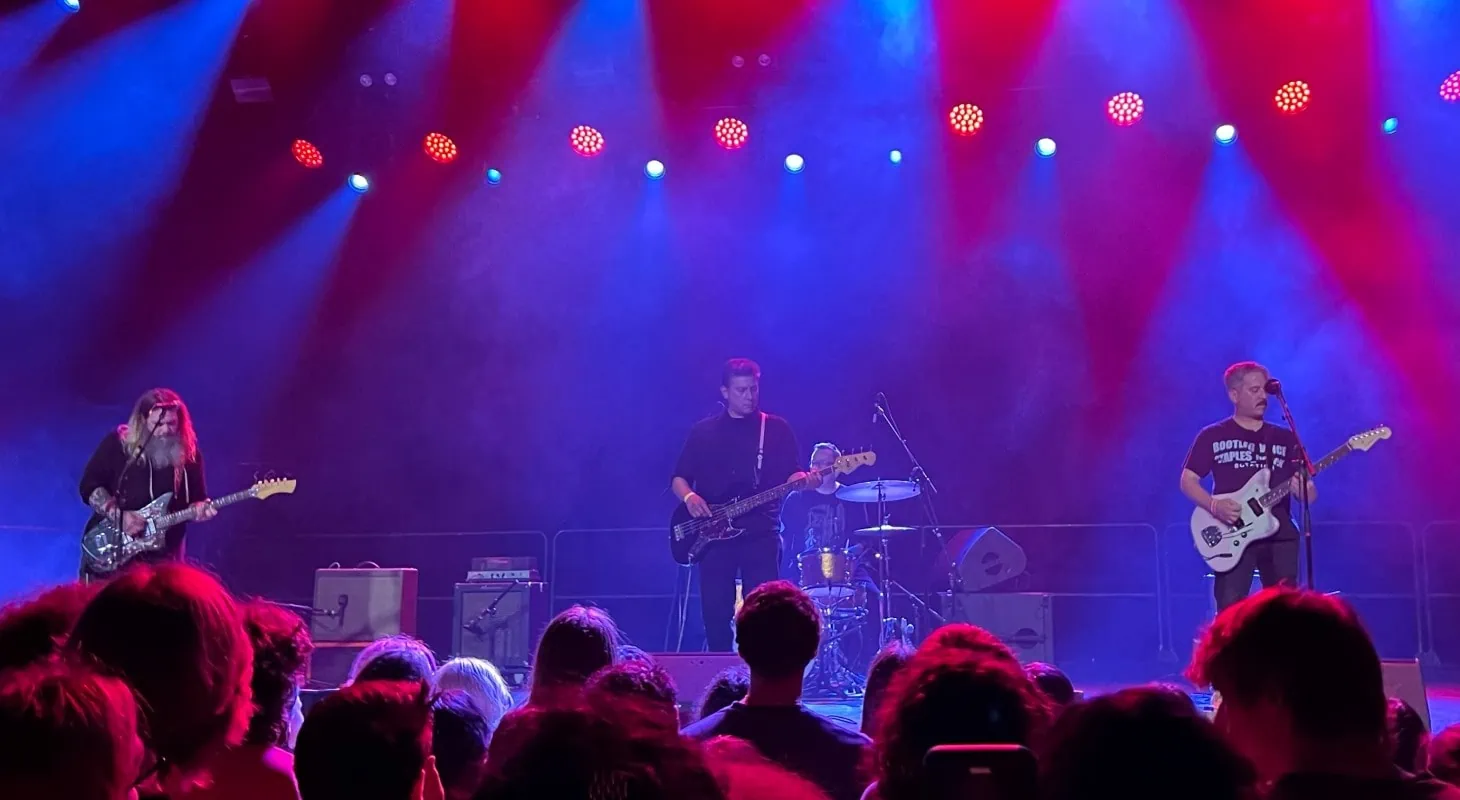Slowcore pioneers Duster’s direct-to-tape recordings set them apart upon their public debut in the 1990s. At a time when most rock bands were turning up and letting loose, Duster stood apart from the crowd with a distinctively low-fidelity old-school approach.
A huge part of Duster’s appeal was the warm, analog-sounding tone of their records. No small part of this was their choice to record on cheap low-quality gear, including tape. However, a big part of the band’s sound came from their straightforward gear choices.
Duster was relatively simple when it came to gear, so it’s pretty easy to get close to their tone using widely available guitars, amps, and pedals. In this article, I’ll cover the main gear bases you need to capture the essence of Duster’s ’90s indie rock tone.
Table of Contents
Duster Guitars

Like so many other ’90s bands, Duster eschewed the flashy, high-powered superstrats of the ’80s in favor of more workmanlike guitars. This meant embracing affordable Fender gear, including Telecasters and Jazzmasters. Duster frequently also used Gibson SGs in the ’90s, although their appreciation for that guitar waned in recent years.
Although the Fender Telecaster is best known for its bright, twanging guitar sound as heard on countless classic country records, the Telecaster neck pickup can be excellent for warmer indie rock sounds.
A nice, simple Telecaster like the American Professional is a gold standard for Tele-style guitars. At a lower price point, the Player Plus offers classic Tele tone but is made in Mexico, rather than in the United States.

At a level better suited to beginner players or those looking to maximize bang for buck, I highly recommend the Squier Classic Vibe series. These ultra-affordable guitars are tremendously versatile for the price.
However, if versatility is what you’re looking for, and you want something warmer than a Telecaster, look no further than a Jazzmaster. The Jazzmaster has a warmer tone than the Telecaster and a totally different pickup voicing (with a rounder, more “vocal” quality to it) that sets the Jazzmaster apart.
One of the finest Jazzmasters on the market today is the J Mascis signature model by Squier, which is less than half the price of a Fender Jazzmaster. This is one of the most versatile Jazzmasters on the market, and at an affordable price point, it’s hard to argue against.

Finally, Clay Parton loyally played the Gibson SG during the ’90s. His was a relatively unadorned 60s style SG, so that’s what I’d recommend for his guitar tone. If a full-priced Gibson feels like too much, the Epiphone SG Standard is a terrific guitar, with plenty of bang for buck on offer.
For most Duster tones, I would recommend the Telecaster or Jazzmaster, but an SG will do nicely as well.
Duster Amps
All Duster’s multi-instrumentalists were devoted players of Fender amplification. In particular, they appreciated the vintage warmth and old-school cool of the Fender Bassman.

Although this amplifier was originally intended as a bass amp (to accompany Fender’s invention of the electric bass) it proved very popular with guitar players. In fact, Jim Marshall was trying to copy the Bassman when he came up with the now-famous Marshall amplifier!
A full-power Bassman, at 300 watts, might be altogether too much amplifier for some guitarists, myself included. I live in an apartment and don’t fancy rattling my upstairs neighbor’s windows. The Bassman combo amp provides one valuable alternative to the full-power Bassman, and because it’s so compact, it’s pretty easy to transport to gigs and rehearsals.
For something even smaller, but still loud enough for gigs and rehearsals with a drummer, the Fender Bassbreaker combo amplifier might be best.

It’s an affordably priced amp that offers two main sounds: classic Fender Bassman tones and a more Marshall-esque Bluesbreaker sound, as per Eric Clapton’s work with John Mayall. Set this amp to the Bassman sound if you’re chasing the Duster tone.
Duster Amp Settings
Duster’s tones are warm, fuzzy, and not too distorted or harsh. There’s a distinctive sound to their music that comes more from their recording equipment than from their guitar gear, but you can get close with the below amplifier settings.
Volume: 5
You don’t need a tremendous amount of volume, especially on an amp as loud as the Bassman, for Duster’s music.
Bass: 8
Turn up your low end and make your sound nice and warm with plenty of bottom.
Mids: 5
Pull back the midrange so you don’t have a boxy or mid-forward sound.
Treble: 5
Tame the treble for this tone, keeping it from becoming bright or twangy.
Gain: 3
You’ll need a little gain for this sound, but most of your distortion and drive will come from your choice of pedals.
Duster Pedals
Like so many other slowcore bands, Duster’s sound relied heavily on the use of a few choice guitar pedals. They use stompboxes to color and shape their tone, and getting the right pedal is 80% of the Duster sound. The band preferred colored drives to transparent drives, letting the pedal really sing and influence their sounds.
The main pedal for Duster tones is the classic Boss Blues Driver, turning your gain and tone knobs on the pedal down to two or three (about 9 o’clock) to keep the pedal from pushing your amp too hard.
You’ll also want to use a Boss Digital Delay as your main source of echo, or use the TC Electronic Flashback to cover your delay needs as you switch between chilly digital delay and warmer analog tape delay sounds.

For full-on fuzz, you’ll want to use a classic Big Muff Pi. Make sure to get the Russian-style Pi rather than the Smashing Pumpkins-esque op amp Pi, which has a decidedly denser tone.

Final Word
Duster’s music has a very particular sound. It doesn’t really sound right playing their music without a warm, analog-fuzzy tone. Accordingly, it’s best to dial in a nice sound with the right combination of guitar, amp, and pedals, and let that lead the way.

